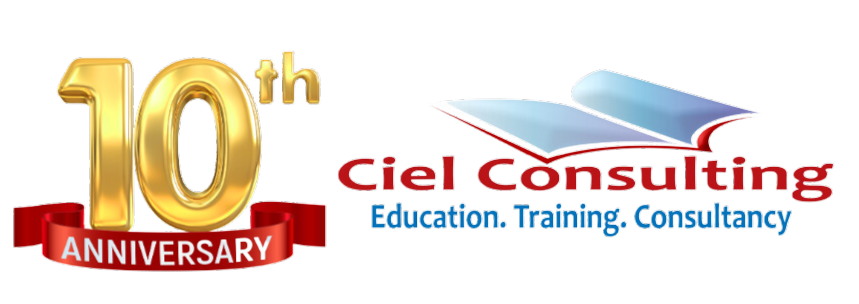Beyond the Human Resource Function: What Lies Ahead?
An increasingly common theme in Human Resource (HR) literature in the 1990's concerns how the HR Department can make a greater contribution to the success of the business it serves. To do so, we must first change our view of the Human Resource role as being only executable within a traditional "Department." We must view HR more as a "function," or "a set of activities," than as a department. While HR services may not be delivered in the future via what we know as a Department, they must be delivered in some way. This article is about the realm of possibilities.
The HR Function Today
Today the HR Department is in a transitional phase. Some organizations have long ago realized that the HR Department can make a greater difference. Others need convincing. A positive trend seems to be developing, as evidenced in publications of the Human Resource professional's accrediting organization, the Society for Human Resource Management, (e.g. see HR Magazine, 11/98). Chief Executive Officers are increasingly viewing the HR function as an actual or potential "strategic business partner." This is encouraging, for as recently as the early 1990's the notion of the HR function as a strategic partner would have been quite novel.
To understand where the HR function is going, it is helpful to briefly review its past.
WHERE HR CAME FROM
In the first half of the 20th century, the Human Resource function grew out of the Payroll function. The remnants of this can be seen in companies that retain the responsibility for payroll processing within the HR Department. Today, the payroll function can often be found in the Controller's functional area.
This new entity then became known as the "Personnel Department." It was responsible for those duties that, quite frankly, didn't seem to fit anywhere else, such as overseeing the employment process. Unlike later iterations, the Personnel Department was not concerned with strategic recruiting and selection. Its goal was simply to hire people to fill "jobs," a 20th century creation. This emphasis explains how, even today, many people think of the Personnel Department as simply "the Department that hires people." So engrained is this idea that, even in surveys of HR practitioners that we conduct today, many of them still define the main purpose of the HR Department as being "the employment of people." Of course, it is true that in many of their companies, hiring people still is their main focus and purpose.
Since its inception, the HR Department has gone through a number of transformations, as depicted in Figure 1. During the 1970's and 1980's as it sought a new identity. These changes attempted to reposition the function as the guardian of employee relations and a provider of services.
The Evolution of the Human Resource Department:
- Payroll
- Payroll/Personnel Department
- Personnel Department
- Employee Services Department
- Human Relations Department
- Employee and/or Labor Relations Department
- Personnel Relations Department
- Human Resource Department
- Human Assets Department
- Human Capital Department
- Human Systems Department
In terms of the evolution of Management, this change had its origins in the "Human Relations" and "Human Resource" Movements of prior decades. The core notion of these movements was that organizations should proactively establish closer links with its employees to create the perception of, if not an actual concern for, employees, because of the employees' potential to disrupt organizations when "relations" became unstable.
Eventually, the notions of the HR function as the Personnel Department and the Employee Relations Department gave way to a new notion: the idea of employees as organizational "resources" to be valued. Thus was born the "Human Resource Department."
Structurally, the Department did not change very much. The various sub-functions of Employment, Compensation, Training, and others remained. But the connotation of employees as "resources" permitted the HR Department to be viewed as something more than just a hiring function or as a mere provider of counseling and other services to employees. It suggested that the HR function recognized that humans as resources could be valued, served, recognized and "invested in," in ways which could increase their value to the company.
It was the start of what would later emerge as "Human Capital" theory. This theory holds that, through training and education, an investment in people will provide a "return" to the company in the form of greater innovation and/or productivity. We see this final transition represented in Figure 1 by several newly conceptualized titles, including "Human Systems" and "Human Assets" Departments. Human Systems, for example, refers to the potential involvement of the HR practitioner in any human system within the company, be it a pay system, a sociotechnical system, a team-based systems or others requiring the internal consultation of the HR professional. Their contribution is tied more closely to the strategic nature of the business and the impact can therefore be even greater than that which was possible within the traditional HR Department.
Ask someone to quickly define the purpose of an HR Department and you'll receive some interesting answers, from both practitioners and non-practitioners alike. The diversity of their answers reflects the uniqueness of the HR function.
We seemingly can't live with the HR function, nor without it. It is becoming something more than it has been historically, and yet it faces the prospect of further evolutionary change. Different methods of service delivery will be seen in different companies. The demand for services will differ depending upon the company and its view of the role and purpose of the HR function.
I believe it is safe to say that the HR function can be "something more" than it has been in many companies. In some, HR has already demonstrated how valuable its contribution can be. In others, it continues to provide only administrative support. Perhaps the solution rests in what the contract will be between the HR function and the organization it serves. What does the organization want HR to be?
We see the potential emergence of the HR function as a "hybrid" structure, consisting of the valuable parts of its past, but combined with new services and approaches aimed at supporting the new business entities and thinking that have emerged in the last fifteen years. For example, the training and development of human assets has now become just as important to the managers of Manufacturing, Engineering, and other functional areas, as it has always been to the HR professional. This convergence of thought provides new opportunities to the HR professional to serve in ways which are increasingly valuable and meaningful to supported functions.
With these changes come new opportunities for HR professionals to influence and impact not only the design and delivery of HR services, but to shape the image of the HR profession in the new millennium. As HR professionals, we should be excited about the possibilities that lie ahead.

